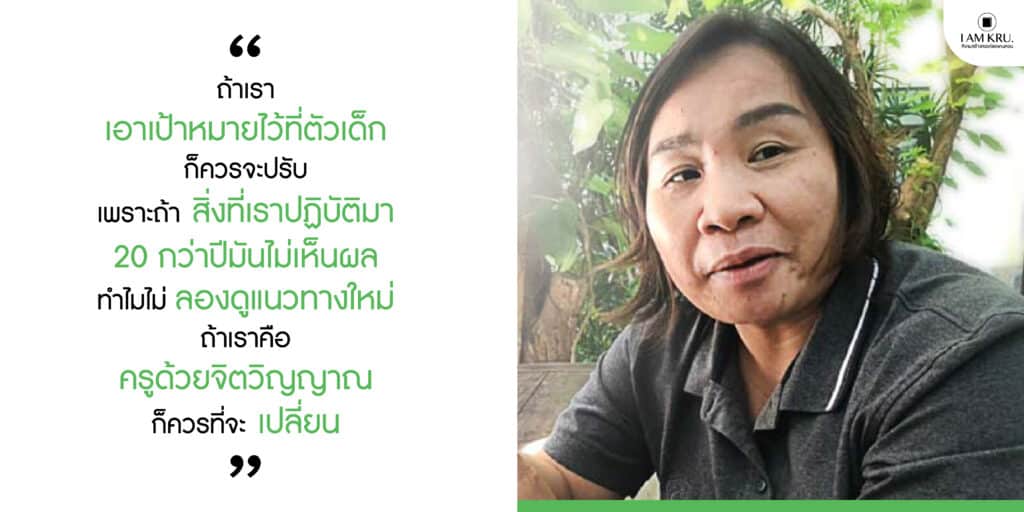Educational Expert Vicharn Panich on Tackling Thai educational Inequality
“Education needs changes. Learning is not only about teachers passing on knowledge to students, but it’s also about students self-learning by doing”, said professor doctor Vicharn Panich, a chair of the subcommittee on Teachers & Schools Quality Program: TSQP.
Why do not all schools share the same ‘high-quality’?
Why do children lack access to effective schools and teachers?
What can be done in an effort to raise the school standards equally?
Many Thai students today face ‘educational inequality as they struggle to attend high ranking educational institutes, which require high scores of basic knowledge tests, a so-called O-NET (Ordinary National Educational Test) approved to educationally reflect high qualification by the Ministry of Education. Students who come from a high-income family that can afford transportation to a high-quality school, which is often concentrated in the city part or center part of an area, might not experience inequality directly. But it is a different story for those who come from low-income family. In this context, the fact that they can’t afford the commute to study at an effective school in an urban area leaves poorer students stuck in an unhappy, poor learning environment. This, in turn, creates a large educational gap between these two groups of students.
The mission of the Equitable Education Fund (EEF) is then to start to rethink how to support students in gaining equitable access to quality education. It is expected that supportive and quality classrooms are provided to all children, regardless of their economic status and geographic location. Students in need of financial aid who lack access to certain resources also need to be equitably supported. Teachers & School Quality Program is therefore established in an attempt to fill educational gaps by improving schools across Thailand to meet high-quality standards.

Student-Centered Classrooms reduce inequality in education.
Teachers & School Quality Program: TSQP by Equitable Education Fund (EEF) is established in response to problematic classrooms and the education system. The program, thus, revolves around the major concern on the desired transformations in Thailand’s education, which promote education system improvement, student achievement and a happy, learner-centered atmosphere in classrooms.
The project has 6 goals as follow:
1. Improve students’ learning performance both horizontally, actively learning other skills beyond classroom knowledge, and vertically, applying a deep understanding of theory into practical action.
2. Create learning platforms for students, teachers, school leaders and community stakeholders
3. Develop a growth mindset
4. Create a transition to education development
5. Adopt new learning approach knowledge
6. Create advancement on teaching standards for teachers and the educational ecosystem
In collaboration with the program, professor doctor Vicharn Panich, a chair of the subcommittee on TSQP, gave a special lecture on Impacts of Active Learning Schools concerning teachers, school leaders and stakeholders in learner development at a conference on Increasing Educational Quality for Equitable Education: Moving Forward Sustainably on 26th September 2021.
“The aim of Equitable Education Fund is to reduce educational inequality in Thailand. Many improvements are yet to arrive in the country; however, it’s disappointing that we are facing worse degradation of society, economy and education.”
“I often look back and think about the fact that I wouldn’t come as far in life as I do today if I was born in the same family condition in current generation. Even if I inherited great intelligence from my parents, I would be kept from success because of today’s worse unequal opportunities in education.”
Education inequality is in every part of the whole system. Parts of it lie in society, knowledge gap among students, unequal competency among teachers as well as classrooms where the gap is increased by the interpretations of ‘intelligence’.
“Children hold various types of intelligence. The learning environment creates educational inequality with limited interpretations of intelligence. Many of my friends were not good at content-based learning but they were talented in creating art or were excellent at sports; however, the teachers didn’t pay attention to their individual skills. Teachers have to be aware of students’ personal talents and find a way to highlight their unique skills to improve their talents along with other skills they are not good at.”
To achieve educational goals, the main factor is the access to high-quality education for all children and the awareness of multiple intelligence of each child.
More than knowledge accumulation is competency development
Besides theory-based learning, schools should provide students with all-around competency development. Vicharn gave meanings of all-around child competency development through the following two main aspects.
“The first aspect, horizontal development, concerns capabilities development beyond academic competencies such as personality development, respect for others, civil engagement and self-esteem. These characteristics need to be developed in general or specifically for each individual child because everyone has their own different ways of learning.”
“The second aspect, vertical development, is learning for application in real-life challenges, not focusing only on theory for exams. Learning approach has to be combined with mind and behavior, which is known as ‘competency-based curriculum’.”
Students in a classroom come from families with different backgrounds, which influence their emotions, experiences and learning approaches differently. Vicharn views this fact as a challenge for teachers and stakeholders in education to design creative learning approaches that meet various learning styles of each student.
How to make school ‘a happy learning space’
In improving a curriculum, a happy classroom needs to be taken into consideration. A happy classroom is a result of a classroom that fosters every student’s achievement in life. Some students don’t know what they study for, so they become unhappy. As a result, they lose interest in studying and are left out of teachers’ attention and the education system.
“Some teachers only pay attention to students with good grades. This is one of the root causes of educational inequality taking place in classrooms. Students with bad grades are often neglected or, even worse, they are hated by teachers.”
“But let’s take another point of view. These children are chances for teachers to get more creative. They can be a part of making a classroom a lively learning space because they have so much potential.”
Vicharn added, “We all want to be happy. When a school makes students unhappy, they need to find other ways that give them a sense of pleasure like using drugs or joining a gang. All these are because humans look for happiness. This is the challenge for staff in the education community where they need to create a learner-friendly classroom for students.”
Therefore, learning approaches in schools need to be based on diverse issues and related to different contexts in the life of every student. Many students might not need only textbook knowledge, but they also need practical skills in making a living for themselves and family and improving their quality of life. When students know what they study for, they can relate themselves to studying and become happy.

Teachers with a growth mindset
Growth mindset is a way of thinking that people can always improve on their intelligence, skills, competencies and personalities through learning, practising and persevering. A person with a growth mindset will constantly seek personal development, experiment and learn new things without fear of failure.
Panich stated that a growth mindset is a key to constantly improving schools for a better education quality in which a more flexible learning atmosphere is created compared to the way it used to be.
“When a school is filled with fixed mindset atmosphere, it’s likely that a person’s intelligence is viewed as a trait inherited from parents solely; this is not true. Intelligence can also be developed by an act of perseverance. Schools, teachers and parents can be key parts in increasing a child’s IQ. Growth mindset is not only a personal trait, but it’s also a trait for school development. This trait has to run in teachers, school directors, the educational ecosystem and society. All of this is for promoting high-quality education.
The world moves forward. Society constantly changes. Knowledge never stops evolving. Students, teachers, schools and educational networks need to adopt growth mindset for a change toward a better education.

Learning, all about deep understanding and application
Active learning schools have to find a way that enables students to conduct deep self-learning. Learning deeply allows students to put their knowledge into practice instead of holding on to theory, getting high scores in exams or getting good grades only.
The 5th objective concerns real-world connections learning because bringing theory into practice may not be enough for this era which is demanding students to be able to connect their classroom knowledge to other contexts or unfamiliar experiences. This process will allow them to create their own set of knowledge.
“Education needs changes. Learning is not only about teachers passing on knowledge to students, but it’s also about students self-learning by doing (active learning) which. Teachers apply active learning approach in theoretical lessons and encourage students to connect their in-class knowledge to situations and contexts beyond classes.”
“If we can achieve this, it will be an advancement of quality teaching standards for teachers and for the Thai educational ecosystem”, said Panich about the ultimate goal of TSQP.
Currently, 733 medium-sized schools under the guide of TSQP are rethinking their way of learning approaches to create a learner-friendly classroom environment where no learners are left behind. In the future, the program will extend its scope to assist hundreds of schools to ensure equitable education for all children.
720
Writer

- เอื้อการย์ โรจนจิรไพศาล (มะแม้ว)
- นักเขียนผู้หลงรักการผจญภัยในเมือง ปรัชญาในชีวิตจริง และการไป Cafe Hopping ทั่วทุกมุมเมือง









